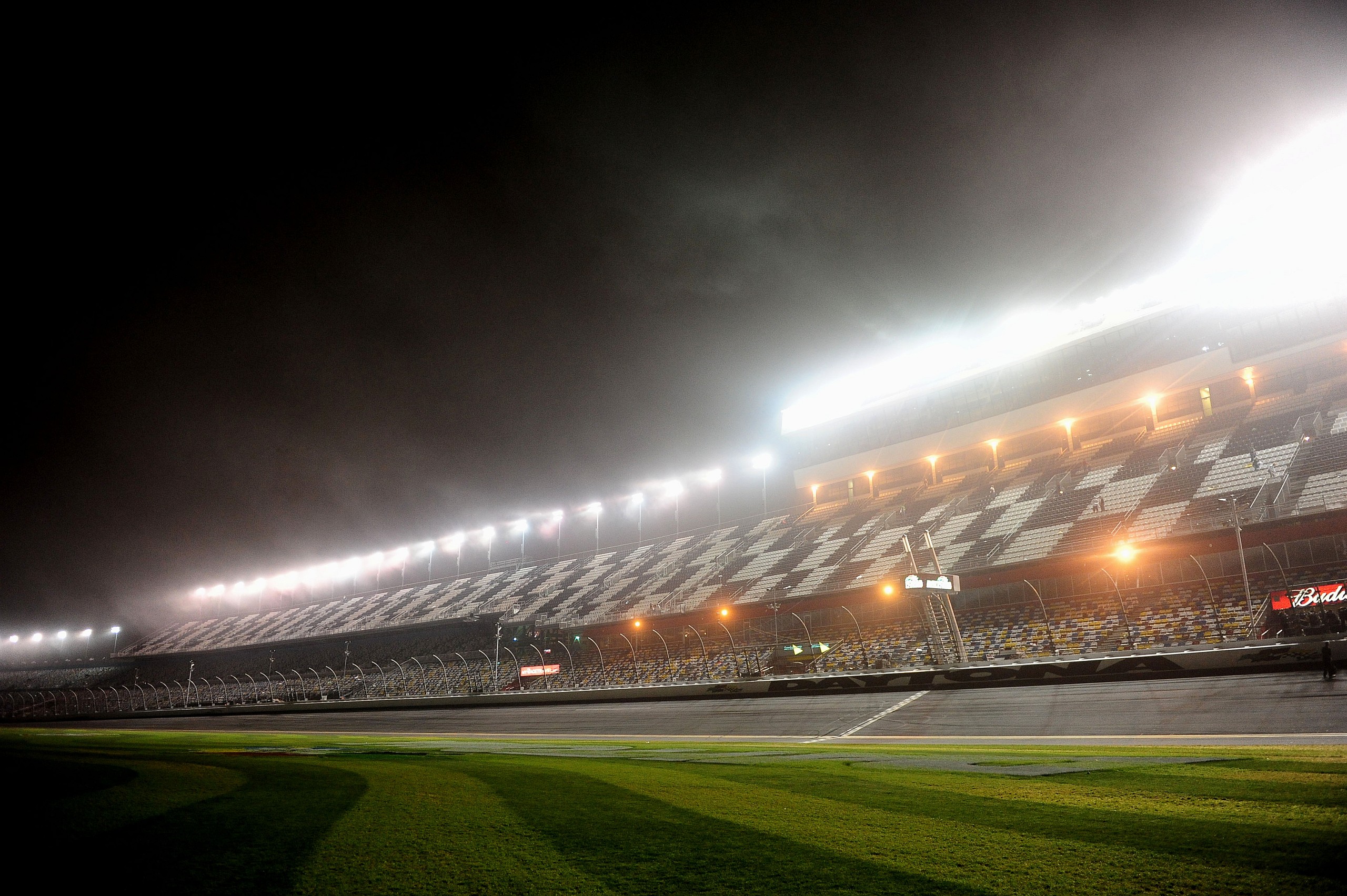
Weather can play an important role in a NASCAR event, making a race historic or creating unforgettable moments. Here are five races impacted by extreme weather conditions
5. Rain Delays: 2012 Daytona 500

The 2012 Daytona 500 was the first ever Daytona 500 run on a Monday because of rain. NASCAR initially scheduled the race for Sunday, February 26th. But after two days of rain, they rescheduled it to 7:00 PM on February 27, 2012. For the first time ever NASCAR completely postponed a race instead of delaying it. Previous incidents only slightly affected the races.
The race was also famous for one more reason: Juan Pablo Montoya’s car crashed into a jet dryer under caution and the fire broke out on the track. This incident delayed the race by two hours and the race continued into the early hours of Tuesday morning. Nevertheless, Matt Kenseth emerged the winner of the race thus giving him his second Daytona 500 victory.
Also Read: NASCAR mandating right side rear air deflector after Michigan flip
4. Lightning: 2019 Coke Zero Sugar 400

The 2019 Coke Zero Sugar 400 race at Daytona was one of NASCAR’s upsets, primarily influenced by lightning and rain. The race initially covering 160 laps, was reduced to 127 laps because of the weather conditions. Lightning in the area caused a red flag with 33 laps left in the race. Justin Haley, driving for Spire Motorsports, won his first ever in the NASCAR Cup Series.
Haley was the winner even though he only led one lap before the race was interrupted by lightning several times. It was a huge surprise as Haley won the race in only his third career start in the Cup Series.
Related: NASCAR’s Unsolved Mysteries: The stories that still puzzle fans
3. Scorching Heat at 2022 Nashville Superspeedway race

The 2022 Nashville Superspeedway race was one of the hottest in recent NASCAR history, another of extreme conditions. The temperature soared to nearly 100 degrees, which made it extremely difficult for the drivers. Logano said it was like ‘standing in front of a blow dryer’ as he was inside the cars. Windshield ducts and exhaust upgrades helped, but heat remained a concern. Kyle Larson described the experience as like “being in an oven” as the race went on longer.
The 300-lap race pushed drivers to their limit and affected their reflexes due to heat exhaustion. To manage, many drivers used cool suits with circulating water and hydration packs. Even though all the drivers drank fluids during the race, some of them required fluid replenishment after the race. This treatment entails the administration of fluids intravenously to replace the fluids lost through sweating.
Also Read: Three NASCAR races will go full-screen commercial free to close out the 2024 season
2. Downpours and Delays at the 2023 Chicago Street Race

The 2023 Chicago Street Race saw extreme weather conditions, namely rain, which caused floods and several delays. The rain affected the first part of the race with several accidents, and Kyle Busch was one of the first ones to slide and hit the tire barrier.
Due to the continuing rain, drivers had to drive on wet and slick roads with poor visibility and unpredictable car behavior. Aric Almirola, Brad Keselowski, and Denny Hamlin had issues in the initial stages of the race because of the wet track.
Rain was not only a problem for the NASCAR Cup Series race. Before that, NASCAR stopped the Xfinity Series race after only 25 laps because of the weather. Downpours were a major factor and made the track slippery and dangerous, and NASCAR did not think it was safe to continue thus declaring Cole Custer the winner.
Related: NASCAR’s 6 greatest crossovers into the movies, including Will Ferrell in ‘Talladega Nights’
1. Snow: 1993 Atlanta Motor Speedway

The 1993 Atlanta Motor Speedway event was a stormy race, taking place during the snowstorm called the “Storm of the Century”. This blizzard hit the eastern United States in March of 1993 and forced the rescheduling of both the NASCAR Busch Series race on Saturday and the Cup Series race on Sunday. This storm was severe to the extent that it grounded flights at Hartsfield Airport in Atlanta, closed restaurants, and blacked out power in many areas.
NASCAR rescheduled the Motorcraft 500 race to a week later, holding it on March 20, 1993. Morgan Shepherd won the race. The snowfall in Atlanta, a city not usually known for snow, made this one of the most famous races in NASCAR history.
Related: Top 10 NASCAR family dynasties